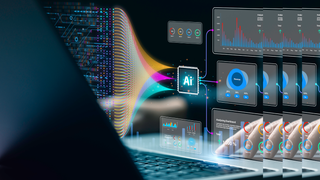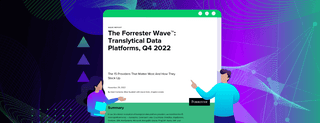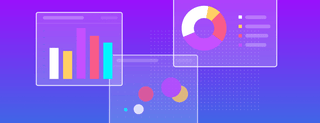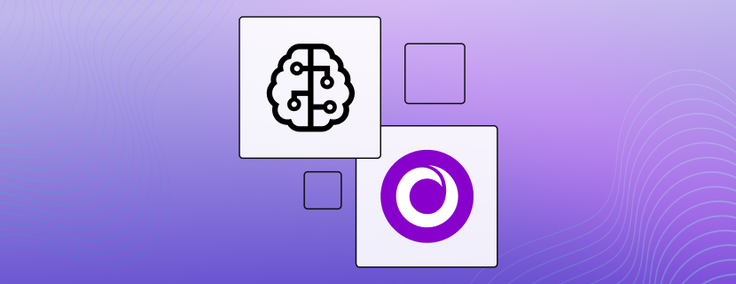
This article focuses on how generative AI helps you analyze and improve in-house data. We'll cover automated data analysis, data augmentation, prototyping and testing, automated content creation and anomaly detection.
Table of contents
What You Need to Know about Using Generative AI with Your Data
Generative AI — a subfield of AI that focuses on creating new data, such as texts and images — goes back all the way to the 1960s when the world's first chatbot was created. Over the past few years, it's become more prominent because of significant advancements in technologies like transformers and large language models (LLMs).
The release of ChatGPT in November 2022 has not only made generative AI worthy of headline news (even outside tech), but it's also shown that nontechnical users can leverage this technology.
Tech teams are also asking: how can we leverage generative AI in our work?
One answer to that question is that generative AI helps you generate code. Countless AI code-generation tools like GitHub Copilot have been created, and can complete your code or generate new code based on nothing but a simple text prompt. Generative AI can also help you stub out new architectures and create artificial data, which comes in handy for testing your code.
The focus of this article, though, is how generative AI can help you analyze and improve in-house data. It covers automated data analysis, data augmentation, prototyping and testing, automated content creation and anomaly detection. It also points out the risks and limitations you need to be aware of when using generative AI.
Let's dive in!
How does generative AI work?
If you've tried tools like ChatGPT or Midjourney you're probably familiar with how generative AI works. You input a simple text prompt using natural language, and the tool gives you an output — text with ChatGPT and an image with Midjourney. But what happens under the hood?
Though not necessary, knowing how generative AI works can help you brainstorm ideas on how to use it with your own data.
In essence, the core of generative AI is neural networks, a subset of machine learning mainly used for handling unstructured data like text, audio, images, videos, etc. Neural networks usually consist of a certain number of connected layers that learn from training data, and making decisions on new data. If you feed large amounts of data to a neural network, it can identify underlying patterns in the data — whether it's textual data, image data or structured data.
Once a neural network learns the underlying patterns in data, it can create new instances. These new instances aren't merely copies of existing instances in the data set; they're unique data points based on the probability distribution of the data the neural network learned from. If you aren't satisfied with the output you get, you can give the generative AI feedback on its output and instructions on how to refine it.
Though the concept of neural networks is not new, the increase in computational power — and the skyrocketing of the amounts of data produced in recent years — have paved the way for generative AI.
Ways to leverage generative AI with your data
While tools like ChatGPT are great, they're limited in how much they can help your team on their own. The real power comes when you combine your own data sets with ChatGPT for custom data sets. Let's explore a couple of ways you can do that.
Automated data analysis
Data analysts are often tasked to dive deep into a company's data and derive useful insights. These insights can help the company make decisions and shape its future actions. However, with the huge amount of data being created nowadays, it's getting increasingly more difficult for data analysts to find the hidden patterns in data sets.
Generative AI can make the process of data analysis significantly easier. Its computational power enables it to look for and identify patterns in data far quicker than a human could. Tools like ChatGPT make it very easy to leverage this capability. You can do basic data analysis in literally one sentence.
Here's what I was able to do with ChatGPT's brand-new feature, the code interpreter released in July 2023. I gave it the famous Titanic data set and a two-sentence prompt.
Note: At the time of writing, you must be a ChatGPT Plus user to have access to the code interpreter feature, and you'll need to have it enabled in your settings.
From this single two-sentence prompt, it identified the columns, checked for missing values, made summary statistics, gave me insights and even made a few visualizations on its own.
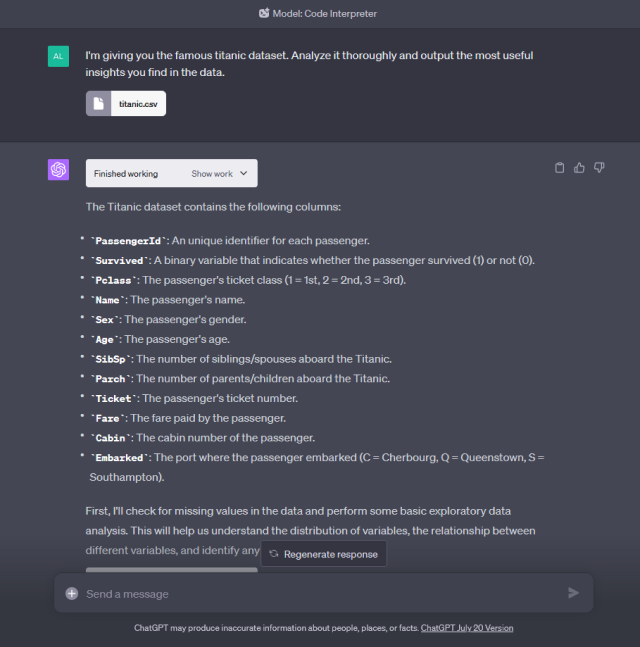
Simple data analysis using ChatGPT — 1
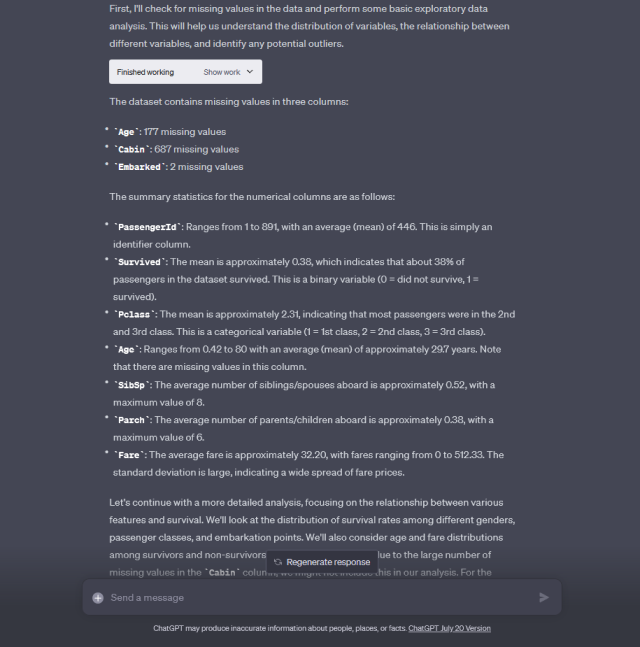
Simple data analysis using ChatGPT — 2

Simple data analysis using ChatGPT — 3
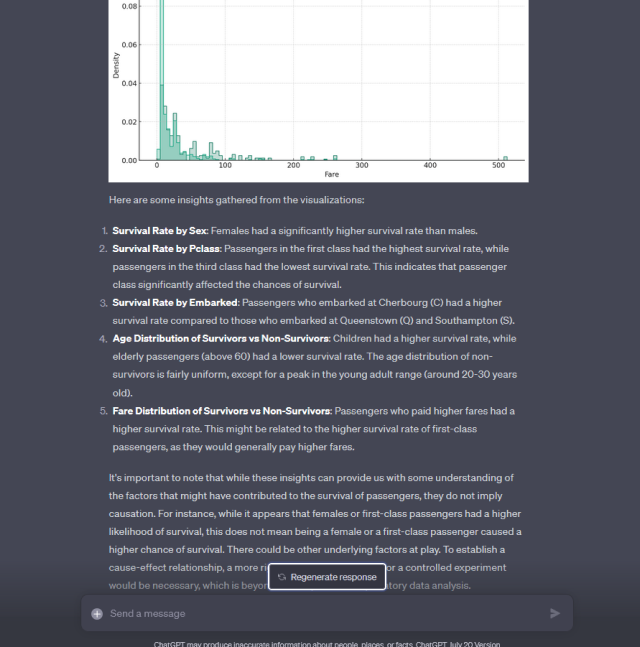
Simple data analysis using ChatGPT — 4
ChatGPT's code interpreter isn't a substitute for data analysts. Its insights are pretty basic, you can only upload files up to a certain limit (roughly 250MB at the time of writing) and it has no access to the internet. It can also code only in Python, and you can't even install external Python libraries.
However, it allows you to quickly learn something about your data if you don't have the time or necessary skills to analyze it yourself.
Data augmentation
When training neural networks, you often run into the issue of not having enough data. This problem is particularly common with image data since it's not as easy to gather and label, and you usually need a lot of images to train a neural network.
One common way to get over this issue is to take the data you currently have and slightly augment it. This way, you get a lot more data that's similar to what you already have.
Generative AI plays a significant role in the data augmentation process. Models like generative adversarial networks (GANs) are capable of learning the distribution of the original data, augmenting it and, in that way, creating additional instances.
Companies that handle image data will most likely benefit from data augmentation. The ability to generate new images can help companies that use AI to detect defects in their products through images; it's also useful for companies that use facial recognition and social media apps that automatically identify different people in images. It can even be used in fields including healthcare and autonomous driving.
Faster prototyping and testing
All developers know how important thoroughly testing a software application is before deployment. Thorough testing includes a wide range of scenarios.
You can improve the quality and speed of prototyping and testing by using generative AI with your own data to come up with relevant test cases that cover numerous scenarios.
Automated content creation
Content creation is one of the most prominent use cases of generative AI. There's no lack of AI tools for creating text or images.
You can use this well-known ability of generative AI to generate reports based on your own data. For example, after performing automated data analysis, as we previously explained, you can use generative AI to create a report or a summary of the key findings.
Anomaly detection
Anomaly detection is a common use case of machine learning (ML), where an ML model looks through a data set and identifies a data point that looks significantly different from the rest.
A common application is for credit card transactions. While the large majority are valid, a small minority are fraudulent, which makes it difficult for the ML model to learn what fraudulent transactions look like. You can use generative AI to create new samples that are similar to the fraudulent samples in your data without being exact copies to help train your ML model.
Similarly to data augmentation, you can use GANs for this purpose. As usual, the GAN looks through the data set and learns the underlying distribution — in other words, what valid transactions look like. It's then able to create new transactions with the same characteristics as the original valid transactions.
Risks and limitations
As you can see, generative AI is extremely useful, but it's not perfect. As with most technology, it comes with risks and limitations that you need to be aware of and manage.
Data privacy concerns
Leveraging generative AI tools involves inputting certain prompts, and these prompts may often include personal or corporate information. While this is not necessarily bad, you must be careful not to share sensitive or confidential information.
Keep in mind that the AI tool will store the data you give it, and it may be used to further refine the tool. Data privacy concerns are so important that some countries temporarily banned tools like ChatGPT.
The quality of generated data
If you've used generative AI tools, they often output answers that are factually incorrect and sometimes just blatantly wrong. That's because AI tools are trained on data sets that might include false information. Therefore, you shouldn't completely rely on the information they give you.
This is particularly true if you aren't sure if the data you feed to the AI is absolutely correct. AI generation tools can only be as good as the data they learn from. If the training data contains false information, so may the outputs of the generative AI.
If you work with your own data, it's crucial to improve the data quality as much as possible before training generative AI on it.
Bias and fairness issues
AI tools are infamous for the gender and racial bias they show at times. This is simply because the data it's been trained on almost inevitably contains these biases, and AI is incapable of thinking independently.
The best way to mitigate these biases is to use diverse data sets to train generative AI and thoroughly test tools before deploying them.
Deepfakes and fake news
Because generative has become so powerful, some people use it maliciously. Deepfakes are a prime example.
Deepfakes are fake videos, audio recordings or photos of a certain person. The issue here is that it's very easy to create a fake video or photo of a person that's almost indistinguishable from a real one. It can therefore easily be used to spread fake news.
Copyright issues
Generative AI creates a unique output. However, because it's trained on data created by humans, its unique outputs are essentially regurgitated content.
The owner of the content that the AI learned from has usually has not explicitly agreed that their work can be used to train the AI, and they generally won't be attributed. It's best to keep the problems around intellectual property in mind if you're using generative AI.
Conclusion
Generative AI is an exciting and promising subfield of AI that allows you to generate new data and content such as graphics, text and synthetic data. The real power of generative AI comes from using it with your own data.
In this article, you learned a few different ways of using generative AI with your own data as well as the risks and limitations you should keep in mind.
If you're exploring this subject, be sure to also check out this article which explains how to use ChatGPT for custom data sets.
Interested in building your own generative AI applications. Try SingleStoreDB free today.
